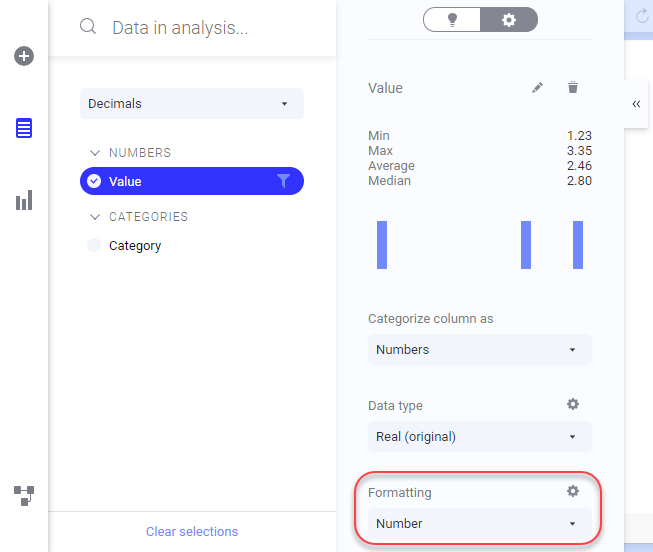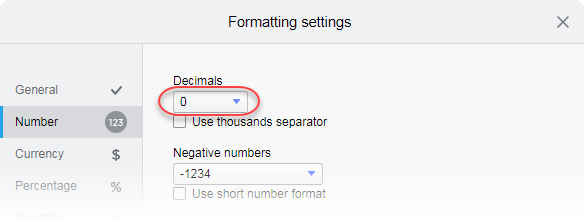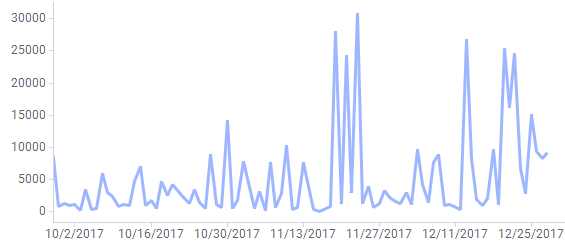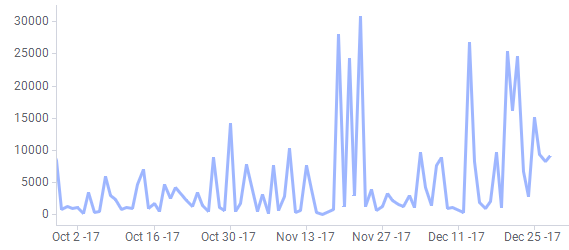The formatting of a column defines how the data in the column will be presented. For example, depending on how you format a date column, the dates therein can be shown as "01/12/2018" or "January 12th, 2018".
Prerequisites
You must have some data loaded in the analysis, and the analysis must be in
Editing mode.
Procedure
-
On the authoring bar, click
Data in analysis and click on the column of interest.
-
In the expanded flyout, make sure that
Details on selected column
 is selected.
is selected.
-
In the expanded flyout, locate the
Formatting section and either change the formatting to a different type directly from the drop-down list or click
Formatting settings
 , and make further modifications in the
Formatting settings dialog as described below.
, and make further modifications in the
Formatting settings dialog as described below.
-
In the
Formatting settings dialog, click the tab of interest.
Depending on the data type, you will have access to different tabs and settings in the dialog. Numeric columns have more options to choose from than other types of columns. The
Custom format allows you to specify your own format, if what you are looking for is unavailable in the predefined formats.
-
Select the formatting you want to use from the controls in the dialog, or, define a custom formatting.
A sample of the selected format is automatically shown in the dialog.
-
When you are done, click
Close.
Result
When you have defined formatting at the column level, this is the default formatting that will be used at all places where the column content is shown.
Tip: In the
Data in analysis flyout, you can also right-click the column of interest and select
Formatting from the pop-up menu.
Note: You can also specify formatting on an axis in a certain visualization using the Properties pop-over or using short-cuts accessed by right-clicking the axis. In those cases, the formatting changes only apply to this particular axis.
Example: Changing the number of decimals
If your data contains measures with many decimals, like the values below, but you are interested in displaying integers only, you can change the default formatting so no decimals are shown.

Show the
Formatting settings dialog from the expanded
Data in analysis flyout by clicking
Formatting settings
 .
.

Then change the number of decimals to zero.

The visualization now shows the values without any decimals:

Example: Defining a custom format for a date column
With custom formatting you can specify exactly how you want a value to be presented. This example shows how you can define a custom format for a date column.
Which predefined formats are available for a date or time column depends on the language setting on your computer.

If you want to define your own format, in the
Formatting settings dialog, click
Custom and type the format string that specifies your format. In this example, a short format of the month name is shown, together with the day, expressed as a number, and short year: MMM d -yy. See
Custom formatting of date and time columns for more details about custom formats.

Click
Close and see the result in the visualization:

Copyright © Cloud Software Group, Inc. All rights reserved.
 .
.

 is selected.
is selected.






